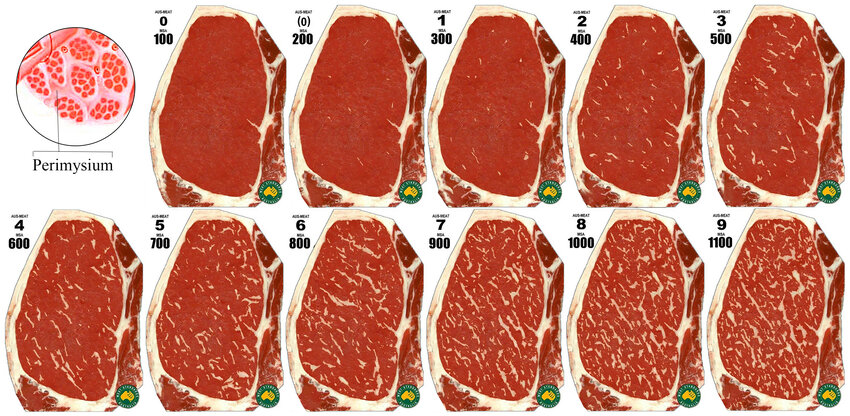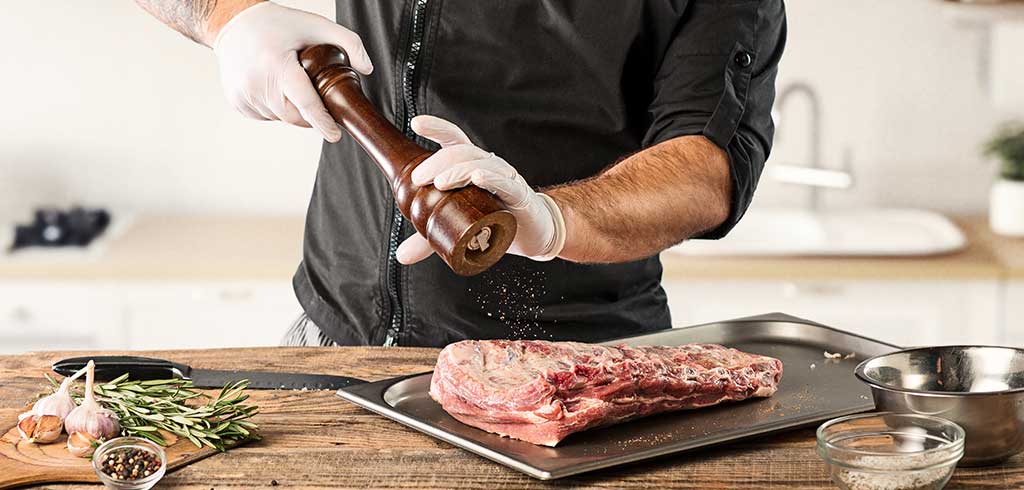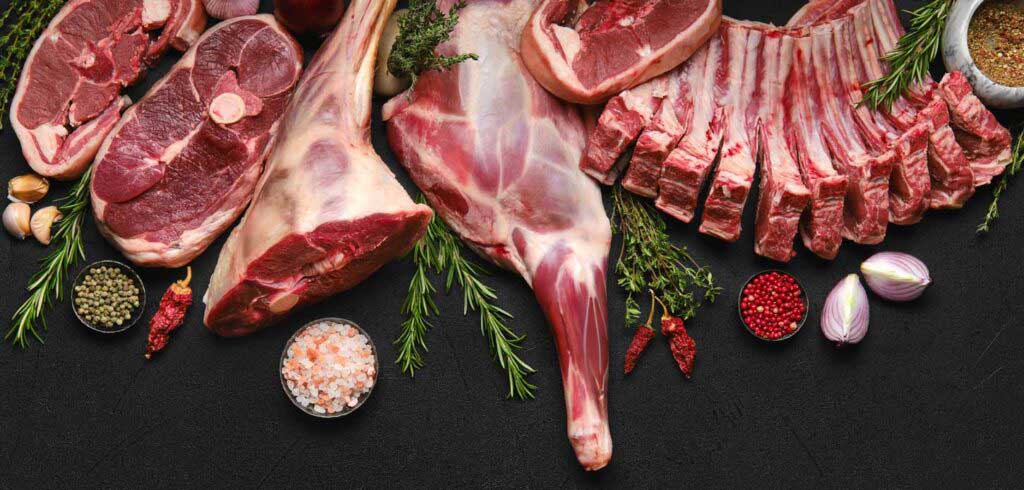When evaluating beef quality, a critical factor is the meat’s marble score. Marbling refers to the small, white streaks of fat dispersed within the red muscle tissue of beef. These minute fat specks play a pivotal role in shaping the overall flavour, tenderness, and juiciness of the meat. Beef boasting a high marbling score is widely recognised as superior in quality compared to its counterparts with lower scores.
In Australia, the significance of marbling takes on added weight. Australians have a deep-seated love for beef. Given the paramount role of the beef industry in Australia, producers are meticulous in ensuring that their cattle meet the stringent criteria for achieving a high marbling score. The Australian beef grading system is acknowledged globally for its robustness and thoroughness.
But what exactly constitutes a meat marbling score, and why is it of significance to both consumers and producers? Let’s delve into the intricacies of meat marbling scores in Australia.
Understanding Meat Marbling Scores in Australia
Defining Marbling Scores:
Meat marbling scores serve as a standardised measure to grade the quality of beef. The numerical value assigned to the marbling score directly correlates with the overall quality of the meat. The higher the marbling score, the more esteemed the beef is considered. This grading system is pivotal for both consumers and producers as it acts as a reliable indicator of taste, tenderness, and the overall dining experience offered by the beef.
The Importance to Consumers:
For consumers, understanding marbling scores is akin to unlocking the secret code to superior beef. A higher marbling score signifies a meat product that is not only more flavorful but also boasts enhanced tenderness and succulence. This information empowers consumers to make informed choices, ensuring that their culinary endeavours are met with a delightful eating experience.
The Significance for Producers:
From the producer’s perspective, achieving a high marbling score is a testament to the quality of their cattle and the effectiveness of their husbandry practices. Producers invest considerable effort to meet the stringent requirements of the Australian beef grading system, as a higher marbling score directly translates to a more valuable product in the market. It’s a reflection of the producer’s commitment to delivering premium beef and contributes to the industry’s reputation for excellence.
Impact on the Australian Economy:
The economic implications of meat marbling scores in Australia are substantial. A thriving beef industry not only adds billions to the country’s economy but also sustains a significant workforce. The demand for high-quality beef, as reflected in marbling scores, ensures a robust market for Australian producers domestically and internationally. This economic interdependence underscores the importance of maintaining stringent grading standards to uphold the industry’s reputation and competitiveness.
The stringency of the Australian Grading System:
The Australian beef grading system is renowned for its rigour. Its meticulous evaluation process considers various factors, including marbling, to ensure a comprehensive assessment of beef quality. This commitment to precision and accuracy positions Australian beef as a benchmark for excellence on the global stage. The meat marbling scores in Australia are not just a numerical representation but a vital determinant of beef quality with far-reaching implications. From the consumer’s discerning palate to the producer’s dedication to excellence and the broader impact on the national economy, marbling scores underscore the intrinsic connection between the quality of Australian beef and its profound influence on various stakeholders in the beef industry.

The anatomy of the Marble Score:
To truly grasp the significance of marble score, it’s essential to delve into the anatomy of the marbling itself. Intramuscular fat consists of fine, intricate networks that weave through the muscle fibres. These delicate fat deposits are not only visually appealing but also contribute to the unique flavour and tenderness of the meat.
The composition of the intramuscular fat includes both saturated and unsaturated fats. While saturated fats contribute to the richness and mouthfeel, unsaturated fats play a role in enhancing the meat’s overall juiciness. The balance between these fats within the marbling is a key factor in achieving the perfect flavour profile that distinguishes premium cuts.
The art of grading:
Marble scoring is not a subjective process; rather, it involves a meticulous evaluation of specific criteria. Trained professionals assess the distribution, density, and overall quality of marbling in a given cut of meat. This grading process ensures consistency and reliability in the classification of various cuts, allowing consumers to make informed choices based on standardized criteria.
Moreover, marbling is not confined to a single muscle but can vary within different regions of the same cut. Understanding this variability is crucial for both producers and consumers, as it influences the overall grading of the meat. A comprehensive marble score takes into account the entire cut, providing a holistic view of its quality.
Global variations in grading:
While marble scoring is a widely accepted standard, it’s essential to acknowledge that different countries may have variations in their grading systems. For instance, the Japanese Beef Marbling Standard (BMS) is renowned for its detailed approach, dividing the scores into subcategories to further refine the assessment. In contrast, the United States employs a simpler grading system that ranges from Select to Prime, with the latter indicating higher levels of marbling.
Understanding these global variations allows consumers to navigate the diverse landscape of meat products, ensuring that they are well-informed regardless of the origin of the cut.
Environmental and genetic influences:
Marble score isn’t solely a result of grading; it’s deeply intertwined with both the genetics of the animal and its rearing conditions. Wagyu, for example, owes much of its exceptional marbling to selective breeding practices that prioritize the development of intramuscular fat. The meticulous care given to these animals, including their diet and living conditions, further contributes to the quality of the final product.
Similarly, Angus cattle are known for their ability to produce well-marbled beef. The combination of genetic traits and specific feeding practices, such as grain finishing, plays a crucial role in achieving the desired marble score. These environmental and genetic influences highlight the interconnectedness of various factors in the pursuit of premium meat quality.
Consumer education and transparency:
As the demand for high-quality meat grows, there’s a corresponding call for transparency in the industry. Consumers are becoming more conscientious about the origins of their food and the practices employed in its production. Marble score, as a standardized grading system, serves as a tool for transparency, allowing consumers to make ethical and informed choices about the meat they purchase.
Educating consumers about the intricacies of marble scores fosters a deeper appreciation for the craftsmanship involved in producing top-tier cuts. It empowers individuals to align their preferences with their values, whether they prioritise sustainability, animal welfare, or simply the pursuit of a gastronomic masterpiece.
Innovations in marble score technology:
The integration of technology into the evaluation process enhances efficiency and precision, contributing to the overall improvement of meat quality across the industry.
The future of the marble score:
Looking ahead, the future of marble score is marked by a commitment to sustainability, ethical practices, and continuous improvement. Producers, driven by consumer demands and a passion for excellence, are likely to explore innovative approaches to achieve higher marble scores without compromising on environmental stewardship.
Additionally, as consumer awareness grows, there may be a surge in demand for alternative and lesser-known cuts with impressive marble scores. This shift could encourage more sustainable use of the entire animal, minimising waste and offering consumers a broader range of choices.
The effect of marbling on the taste, tenderness, and overall eating experience of beef
The marble score is not just a number; it’s a dynamic and multifaceted aspect of meat quality that reflects the artistry of production, the influence of genetics and environment, and the evolving expectations of consumers. As you navigate the world of premium cuts, armed with the knowledge of marble score intricacies, you’re not just choosing meat; you’re indulging in a culinary journey shaped by tradition, innovation, and a commitment to unparalleled quality.


